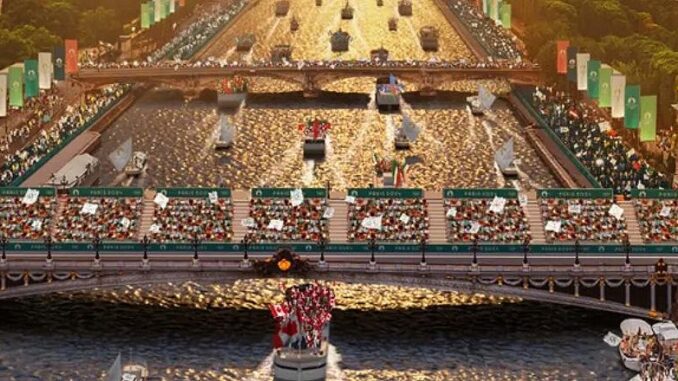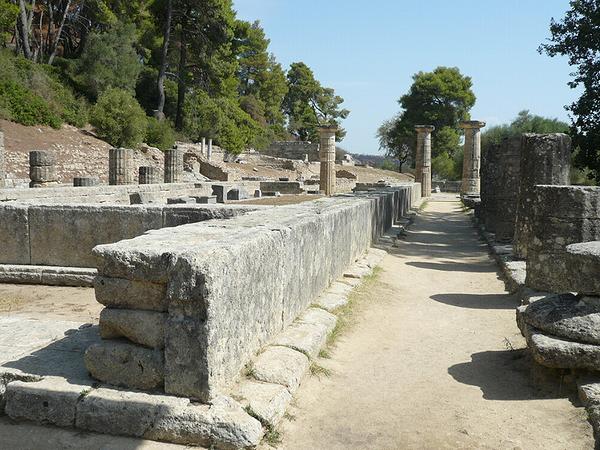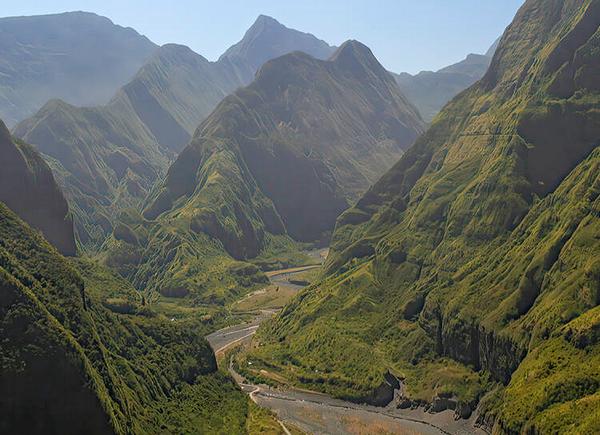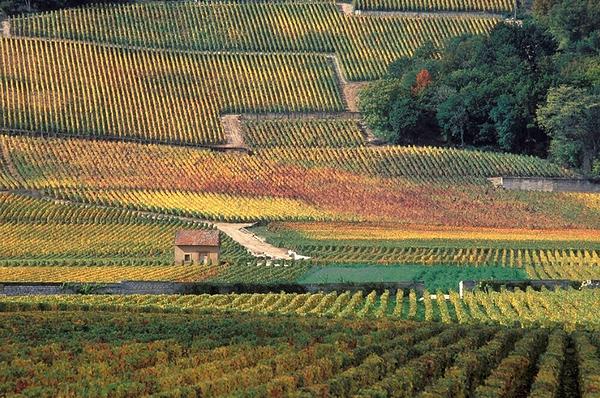
PARIS, France, June 18, 2024 (ENS) – France is hosting the Summer Olympic Games for the first time in 100 years, and this year the Paris 2024 Olympic Torch Relay illuminates the wonders of Europe’s finest environments as it visits 30 protected UNESCO World Heritage natural and cultural sites. The flame will end its journey in Paris on July 26 for the opening ceremony which, for the first time in the history of the modern Olympic Games, will take place in the heart of a UNESCO site.
On July 26, the torch will arrive in Paris. At the World Heritage Site that stretches along the Banks of the Seine River, the Opening Ceremony will showcase a cultural heritage of outstanding universal value.
The site covers all the architectural masterpieces along the Seine, such as the famous Pont-Neuf and Alexandre III bridges, and emblematic buildings and sites such as the Île Saint Louis, Île de la Cité and the Cathedral of Notre-Dame, the Hôtel de Ville, the Louvre Museum, the Hôtel des Invalides and its esplanade, the Place de la Concorde and the Eiffel Tower.
Before it arrives in Paris, between May 12 and July 26, the torch will pass through unique, exquisite natural and cultural sites protected by the UNESCO World Heritage Committee’s designation and the cooperaton of the host country, France.
With 194 Member States, the United Nations Educational, Scientific and Cultural Organization, UNESCO, contributes to world peace and security by leading multilateral cooperation on education, science, culture, communications, and information.
UNESCO Director-General Audrey Azoulay, together with 2,300+ employees in 54 countries, oversees more than 2,000 World Heritage sites, Biosphere Reserves and Global Geoparks; networks of Creative, Learning, Inclusive and Sustainable Cities; and over 13,000 associated schools, university chairs, training and research institutions.
Paris 2024 Olympic Torch Relay
The torch for the Paris 2024 Olympics was lit on Tuesday, April 16 where the ancient Olympics were held thousands of years ago, at the Archaeological Site of Olympia in Greece, inscribed on UNESCO’s World Heritage List in 1989.

The Olympic flame then crossed the Mediterranean Sea from Athens to Marseille, and from that busy port city, on May 8, the Olympic flame began its historic journey across France, paying tribute to cultural and natural heritage sites along the way.
The marvelous cultural sites include the city of Arles exceptional architectural heritage ranging from Roman arenas to Provençal Romanesque art of the 11th and 12th centuries. They include four routes to Santiago de Compostela originating from: Paris Vézelay, Le Puy and Arles used by pilgrims in the Middle Ages, now lined with pilgrimage churches and sanctuaries, hospitals, bridges and wayside crosses.
The torch has already visited, or is scheduled to visit, a rich route of stunning natural features.
On May 19, the torch visited Gavarnie Cirque, Pyrenees, part of Pyrénées – Mont Perdu, a mountain landscape located between France and Spain, centred around the Mont Perdu peak, a limestone massif reaching an altitude 3,352 meters. The site includes two of Europe’s largest and deepest canyons on the Spanish side and three major cirque walls on the more abrupt northern slopes with France.
Human settlement in this region dates back to the Upper Paleolithic period (40,000 – 10,000 B.C.)
On May 31, the torch took in Mont-Saint-Michel and its Bay on the coast of France, a unique combination of natural features and inspiring architecture. This Gothic Benedictine abbey dedicated to the archangel Saint-Michel was built upon a rocky islet surrounded by vast sandbanks, between Normandy and Brittany. The Mont Saint-Michel bay supports a variety of coastal wetlands, natural and grazed salt marshes, reclaimed marshes and mudflats.

On June 12, the torch was carried to the site of the volcanoes, cirques and ramparts of Reunion Island, an island in the southwest Indian Ocean that is an overseas department and region of France with a population of 885,700 as of January 2024. Dominated by two adjoining volcanic peaks, the site’s spectacular landscape features escarpments, forested gorges and wooded valleys. It provides a natural habitat for a wide variety of native plants found nowhere else on earth.
Here, subtropical rainforests, cloud forests and heaths create a remarkable mosaic of ecosystems and landscape features.
On June 17, the torch was taken to the Volcanoes and Forests of Mount Pelée and the Pitons of Northern Martinique. Part of the archipelago of the Antilles, Martinique is located in the Caribbean Sea about 450 km (280 miles) northeast of the coast of South America and about 700 km (435 miles) southeast of the Dominican Republic.
The north of the island is especially mountainous with four ensembles of pitons (volcanoes) and mornes (mountains): the Piton Conil on the extreme North, which dominates the Dominica Channel; Mont Pelée, an active volcano that has created grey and black sand beaches in the north; the Morne Jacob; and the Pitons du Carbet, an ensemble of five extinct volcanoes covered with rainforest dominating the Bay of Fort de France.
All the forest types and plant diversity native to the Lesser Antilles and found nowhere else on earth are found on this site, in forests from the seashore to the volcanic summits.
On July 3, the Olympic torch will be carried to the Nord-Pas de Calais Mining Basin, the French part of the northwest European coal seam. This region offers a remarkable landscape shaped by three centuries of coal mining from the 1700s to the 1900s.
The site contains 109 separate components over 120,000 hectares. It features mining pits and lift infrastructure, gigantic slag heaps, coal transport infrastructure, railway stations, workers’ estates and mining villages, schools, religious buildings, health and community facilities, company premises, owners and managers’ houses, and town halls. The site bears testimony to the quest to create model workers’ cities from the mid 19th century to the 1960s.

(Photo © Jean-Louis Bernuy courtesy Association des climats du vignoble de Bourgogne)
On July 12 the torch will visit a site that blends natural and cultural features – the Climats, terroirs of Burgundy. Climats are precisely delimited vineyard parcels on the slopes of the Côte de Nuits and Côte de Beaune south of the city Dijon. They differ from one another due to specific natural conditions such as geology and exposure, vine types.
Climats are the product of natural conditions and the accumulated experience of winemaker expertise over almost two millennia. They reflect the ancient relationship of local human communities with their lands.
On July 20, the torch will make its last visit before arriving in Paris – the Palace and Park of , located in the commune of Fontainebleau, France, 34 miles southeast of the center of Paris. Used by the kings of France since the 12th century, the hunting residence of Fontainebleau, located in the heart of a vast forest in the Île-de-France region, was transformed, enlarged and embellished in the 16th century by King François I, who wanted to make a “new Rome” of it. The château remained a royal or imperial residence until the end of the Second Empire.

The forest has an area of 250 km2 (97 sq mi). The most common trees are: oak (44%), Scots pine (40%), and European beech (10%). Three thousand species of mushrooms have been discovered in this forest, which is also inhabited by 7,000 animal species, 5,000 of them insects.
Protected wild mammals in the Fontainebleau forest include: deer and roe deer, wild boar and foxes, squirrels, rabbits, badgers and eight species of bats. Many bird species live in the forest or come in winter when their home ponds are iced over – kingfishers, grebes, bruants, and, rarely, mergansers and golden-eye garrots. Raptors such as buzzards, owls, and hawks are frequently observed.
On July 26, for the first time in the history of the Olympic Summer Games, the Opening Ceremony will not take place in a stadium. Paris 2024 is breaking new ground by bringing sports into the city and the Opening Ceremony is set to be held in the heart of the city along its main artery – the River Seine.
The traditional parade of athletes will be held on the Seine with boats for each national delegation. These boats will be equipped with cameras to allow television and online viewers to see the athletes up close. Winding their way from east to west, the 10,500 athletes will cross through the centre of Paris, the overall playing field for the Games on which these competitors will display their sporting prowess over the next 16 days.
The parade will depart from the Austerlitz bridge beside the Jardin des Plantes and make its way around the two islands at the centre of the city – the Île Saint Louis and the Île de la Cité – before passing under several bridges and gateways. Athletes on board the parade boats will see some of the official Games venues, including Parc Urbain La Concorde, the Esplanade des Invalides, the Grand Palais, and lastly the Iéna bridge where the parade will come to a stop before the ceremony’s finale.
The parade will come to the end of its six-kilometre (four mile) route in front of the Trocadéro, where the remaining elements of Olympic protocol and the final shows will take place.
The NBC television network, which broadcasts the games, will air its live coverage of the 2024 Paris Olympics Opening Ceremony in 150 giant-screen Imax locations across the United States on Friday, July 26 in a first for the games and for the cinema company. NBC late night TV star Jimmy Fallon will co-host the Closing Ceremony on August 11 at the Stade de France, the country’s national stadium.
Toyota will bring a 100 percent electrified passenger vehicle fleet to Paris, in line with its commitment to reduce carbon emissions. Overall, Toyota will deliver more than 2,650 electrified passenger vehicles to be used during Paris 2024, of which 150 are wheelchair accessible.
Île-de-France Mobilités and the public transport operator RATP will modify bus services in the vicinity of the venues as soon as they are installed, to guarantee the continuity of the public transport service and maintain services within Paris as much as possible. The bus lines concerned will be diverted, operated in two sections or limited depending on the events planned in the public space such as the opening ceremony and road races.
Metro services will operate normally throughout the Olympic Games. Only the Tuileries, Concorde and Champs-Elysées Clémenceau stations will be closed due to their location within or in the immediate vicinity of a competition venue.
This will be the third time Paris has hosted the Olympics, which it also hosted in 1900 and 1924, tying London for the most years as a Summer Games host. Los Angeles, which hosted the Summer Olympics in 1932 and 1984, will tie those two cities when it hosts the first Summer Games in the United States in 32 years in 2028.
Featured image: An artist’s impression of the Paris 2024 Olympic Summer Games opening ceremony on the River Seine, which will take place on July 26, 2024. (Image by Florian Hulleu courtesy NBC Sports)
© 2024, Environment News Service. All rights reserved. Content may be quoted only with proper attribution and a direct link to the original article. Full reproduction is prohibited.



